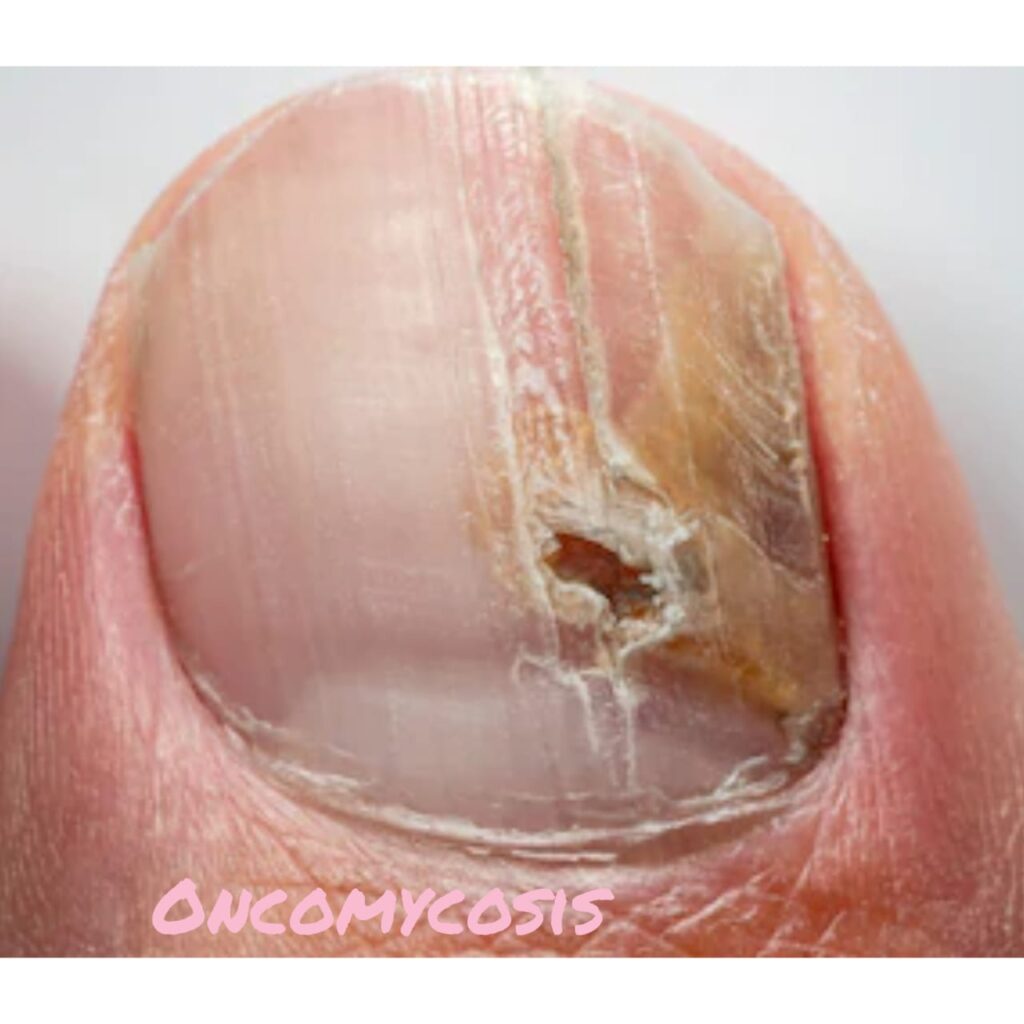Very often we all after a particular age see nail infections which is very common problem. Do you doubt to have a pre Diabetes syndrome? Many people ignore this problem and are unaware of it.
Onychomycosis ie yellow nails with inflammation around the sides of nails is the most common symptom. The nail becomes painful on touch. Tinea pedis ie fungal nails is also one of the foot problems. Onychomycosis is caused by 3 classes of fungi:
- Dermatophytes
- Yeast
- Nondermatophyte molds.
Dermatophytes are the most common cause of onychomycosis. Two major pathogens are responsible for 90% of all onychomycosis cases. Trichophyton rubrum which is a anthropophilic saprotroph accounts for 70% and Trichophyton mentagrophytes accounts for rest 20% of all cases. Diabetes and nail infections are linked.
Thickened brittle mycotic nails may cause pressure erosions of the nail bed and hyponychium. The nails become sharp pointed and may cause injury to the surrounding skin, resulting in the formation of fissures that create a portal of entry for bacteria. Diabetic patients with peripheral neuropathy are more prone to develop Onychomycosis.
Around 71 %of the population suffering from Diabetes have onychomycosis. The main risk factors for nail Infections like onychomycosis are :
- Communal bathing
- Family history of nail infections
- Diabetes
- Poor hygiene condition
- Poor bathing
- Excessive sweat
- Bad footwear
All these above factors are majorly responsible for nail infections. One must be cautious about this disease as an alarming bell for a pre Diabetes state. That means you might get Diabetes in the next coming months or so.
Symptoms:
- Yellow discoloration of nail.
- Painful greater Toe
- Inflammation and swelling of the surrounding area
- Distortion of the toe
- Fungal infection between the web of the toe fingers
- Offensive sweat
Management of the foot is of utmost importance:
One must maintain clean hygiene habits for foot. Wearing socks helps. As onychomycosis is an early step towards foot ulcer, so it is necessary to take precautionary steps to prevent onychomycosis. Onychomycosis when left untreated, may lead to severe complications like paronychia, foot ulcer, tinea pedis. Also infection can spread to nearby nails and adjacent tissue causing destruction.
Consult your diabetologist for early intervention. Clean your nails and foot with Dettol in warm water especially in between the webs of toes and fingers.
Be cautious of any foot injury. Wearing proper sports shoes helps.
Make sure you eat high fiber, low fat diet. Avoid junk food, and high carbohydrate food.
Have proper bath, as hygiene plays very important role in this. Cutting overgrowth of nails and trimming them regularly also helps in maintaining the condition of nails.
Topical antifungal treatment with superficial nail debridement has limited scope in severe cases. Surgical intervention is a must in such severe cases. Hence oral antifungal treatment is necessary along with topical application of nail lacquer. Ciclopirox 8% nail lacquer solution application proves to be beneficial in such cases along with physical debridement.
Consult your podiatrist at regular intervals and follow the treatment. Monitor your sugar levels.
Thank you for reading and hope you have understood the importance of maintaining nail hygiene and keeping Diabetes at bay.







